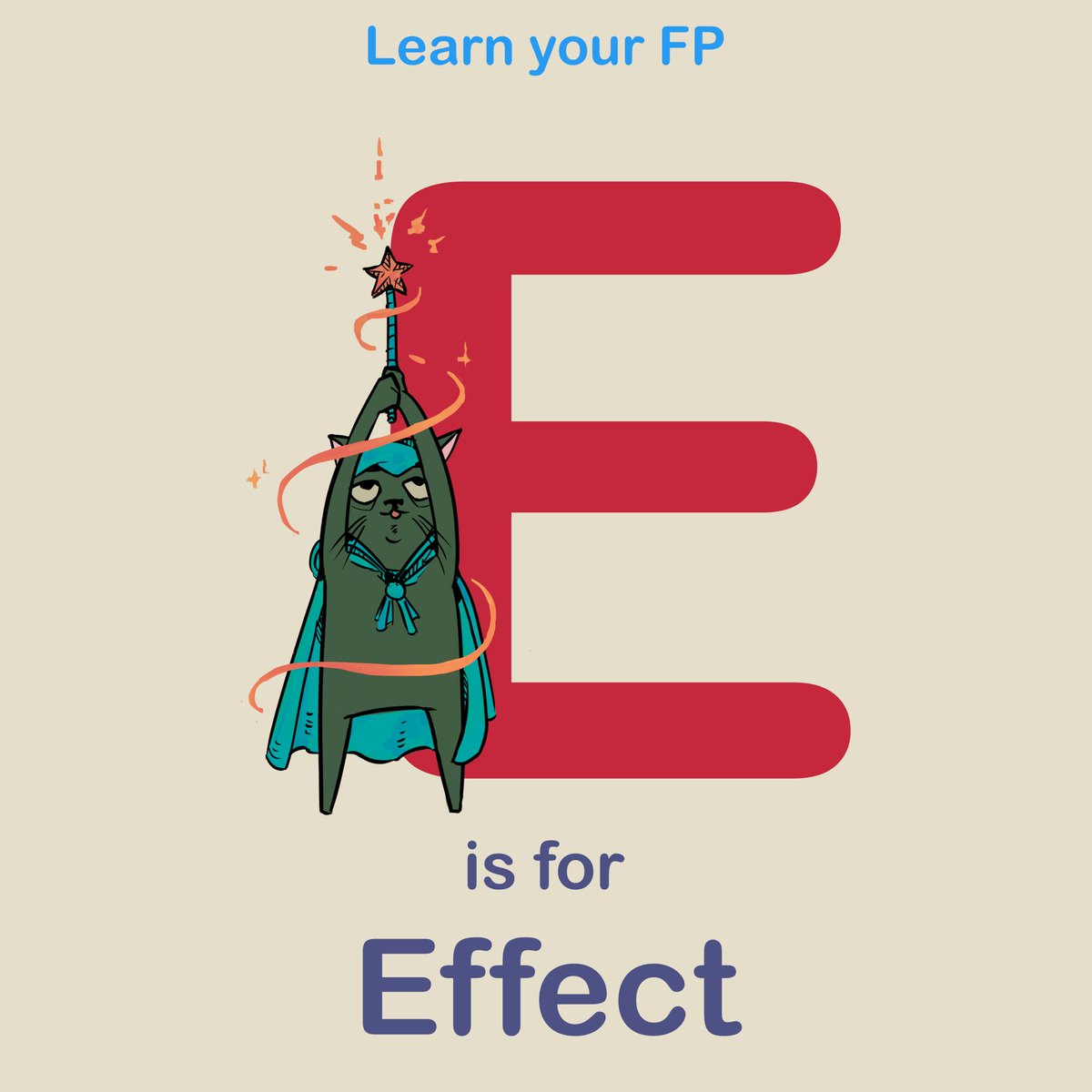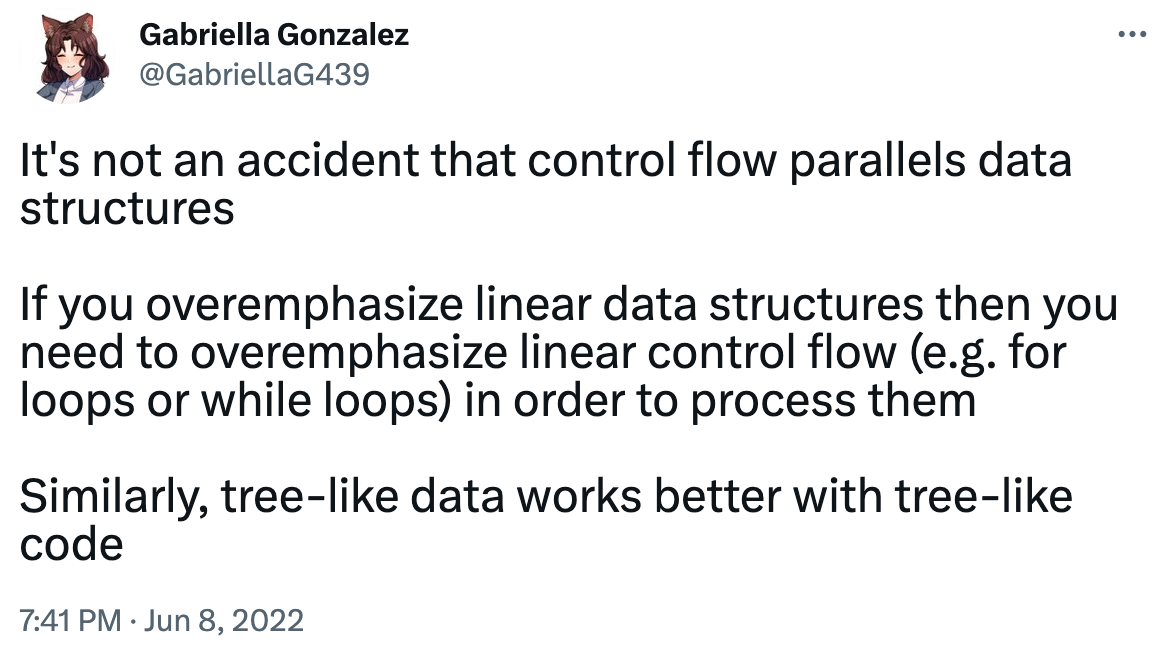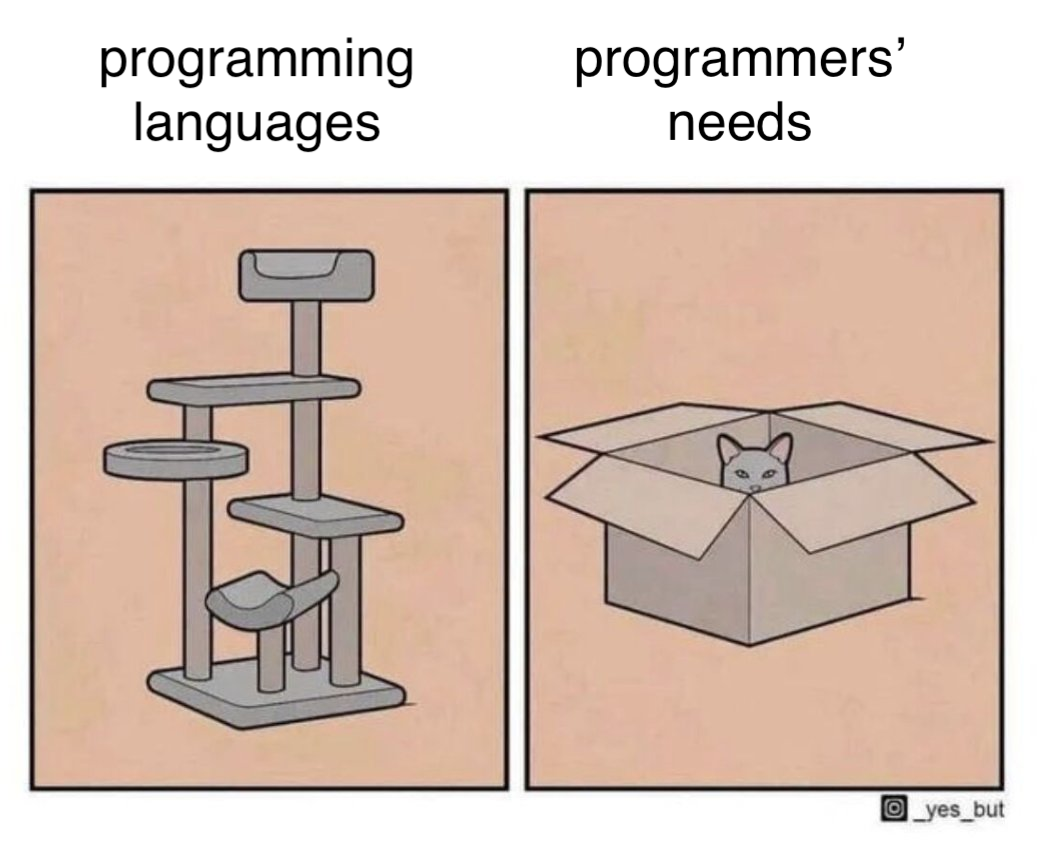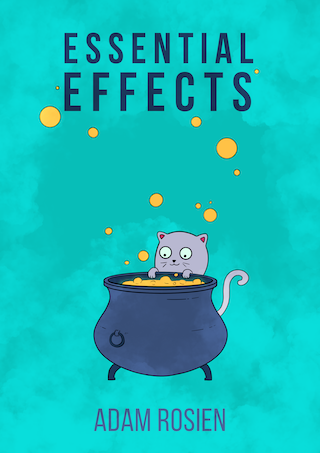
Remember the Chinese spy balloon?
Adam Rosien @arosien / @arosien@fosstodon.org
Inner Product LLC @InnerProductLLC
ScalaDays Seattle, 6 Jun 2023

Remember the Chinese spy balloon?

public async Task<ActionResult<bool>> GetRedacted(...) {
var user = HttpContext.User as RedactedPrincipal;
if (...) return BadRequest(...);
var results = ...;
if (!results.IsValid) return BadRequest(results.ToString());
try {
Responses<RedactedResponse> redacted = await _redacted.Redacted(...);
if (metadata ?? false) {
return Ok(...);
}
else { return Ok(...); }
}
catch (ArgumentException e) {
return BadRequest(e.ToString());
}
}☜ this is C#
This direct style mixes:
asynchronous execution
conditional logic / branching
early returns
into a (mostly) linear sequence.
How do I translate (functional, monadic(?)) Scala into this style?
asynchronous execution
conditional logic
early returns

☜ Future, IO…
☜? hopefully some cats combinators
☜? monads
But why is this translation so complicated?
That is, why is it bugging me so much??
Using monads
Using async/await
Reconciling these styles

for {values ← effects
} yield expr
* All effects must have the same type; e.g., all Option, all Future, etc.
Monads abstract over errors (usually). This is (usually) a good thing.
def doSomething(req: Request): F[Response] =
for {
a <- serviceA(toARequest(req))
b <- serviceB(toBRequest(a))
} yield toResponse(a, b)def doSomething(req: Request): F[Response] =
for {
a <- serviceA(...)
b <- serviceB(...)
} yield toResponse(a, b)def doSomething(req: Request): F[Response] =
serviceA(...).flatMap { a =>
serviceB(...).map { b =>
toResponse(a, b)
}
}=def doSomething(req: Request): F[Response] =
for {
a <- serviceA(toARequest(req))
rb = toBRequest(a)
b <- serviceB(rb)
res = toResponse(a, b)
} yield resdef doSomething(req: Request): F[Response] =
for {
a <- serviceA(toARequest(req)) 🧨
b <- serviceB(toBRequest(a))
} yield toResponse(a, b)
The call to serviceA fails.
No a is produced, so no call to serviceB, etc. Everything stops.
doSomething returns the error.
| Monad | success type | error type |
|---|---|---|
|
|
|
|
|
|
|
|
|
|
|
|
|
|
|
… | … | … |
def doSomething(req: Request): F[Response] =
for {
a <- serviceA(toARequest(req)) 🧨
.handleError(_ => defaultA) 🙈
b <- serviceB(toBRequest(a))
} yield toResponse(a, b)
Note: we don’t use built-in conditional logic (if/else) with monads. They need to be into the monad, usually as combinators.
See also: MonadError typeclass for error-handling combinators.
def doSomething(req: Request): F[Response] =
serviceA(toARequest(req)) 👍
.ensure(new RuntimeException("meh!")) 🧨
(a => a.isValid) 🧐
.handleError(_ => defaultResponse) ⏏️
.flatMap { 🥳
for {
b <- serviceB(toBRequest(a))
} yield toResponse(a, b)
}
I don’t actually know a good way to do this monadically. This is my best guess.
See also: MonadError typeclass for error-handling combinators.
People struggle with for-comprehensions. It’s a wholly different syntax.
On the other hand, perhaps they are conceptually simpler? Less syntax: no val keyword required, etc.
Conditionals, error handling and early return are all handled as combinators—that you need to know—on the monad. These use typeclasses and other more advanced patterns.

Monads abstract over the sequencing of effects: what happens next.
Monads fail-fast. We can also handle errors using monad-specific or monad-agnostic combinators (via Typelevel cats, etc.).
for-comprehensions provide a different + better syntax for monadic sequencing. But it is different than using vals and normal function calls, and so requires more training.

val io: IO[Int] = ???
val program: IO[Int] =
async[IO] { (1)
io.await + io.await (2)
}| 1 | The async "capability" creates a scope where waiting may occur. |
| 2 | We can await effects and act on their results as regular values. |
This is using the Typelevel Cats Effect async/await support.
val io: IO[Int] = ???
val program: IO[Int] =
async[IO] {
io.await + io.await
}val io: IO[Int] = ???
val program: IO[Int] =
io.flatMap { x =>
io.flatMap { y =>
IO.pure(x + y)
}
Other systems and libraries create something similar.
def doSomething(req: Request): F[Response] =
async {
val a = await(serviceA(toARequest(req))) 🧨
.?(defaultResponse) ⏏️
val b = await(serviceB(toBRequest(a))) 🥳
toResponse(a, b)
}
There are proposals to add a early return operator (? in this example) which can optionally supply a default value in case of an error.
def doSomething(req: Request): F[Response] =
async {
val a = await(serviceA(toARequest(req)))
if (!a.isValid) defaultResponse
else {
val b = await(serviceB(toBRequest(a)))
toResponse(a, b)
}
}
This does validation and early return.
Async/await is great for programmers who are new to concurrent programming.
But it is non-referentially-transparent. This really bugs functional programmers; refactoring is not safe
It has limited support for higher-order functions—like map or traverse--because it’s a macro.

It’s new in the Scala ecosystem, but can be a good on-ramp for those new to the language.
At the same time, programmers can use the most common parts of the languge (keywords like if, else, etc.) and only need to learn a very small set of new features in order to use asynchronous programming.

I was looking for some theory to explain
my mental mismatch when translating
between monadic and direct styles.

linear | tree-like |
lists | algebraic data types |
statements | expressions |
imperative | functional |
Structure | linear | tree-like |
Data structures | lists (iterables?) | algebraic data types |
Unit of expression | statements | expressions |
Paradigm | imperative | functional |
Branching |
|
|
Error Handling |
|
|
These start to mix and match.
Async/await is fantastic for pure → effectful refactoring.
+ async {
...
- if (isFeatureFlag(FOO)) somethingLocal()
+ if (isFeatureFlag(FOO)) await(somethingRemote())
else somethingElse()
...
+ }
You don’t have to change the (general) structure of the code.
Source: Li Haoyi
Async/await is fantastic for pure → effectful refactoring.
You can then use the more full-featured monadic style in subsequent refactorings.

Async/await vs. monads is not a technological choice. It’s about programmers' needs.
And different programmers have different needs.
Multiple styles can coexist, and we can work on providing guidance on how to do reduce the friction.
async/await:
What Color is Your Function? Classic introduction to the subject.
dotty-cps-asyc "This is the implementation of async/await transformation for Scala 3 (Dotty), based on an optimized version of CPS (Continuation Passing Style) transformation, where the continuation is ‘pushed’ to the monad."
Towards A New Base Library for Asynchronous Computing "This is a proof of concept for a base library for asynchronous computing in direct style."
A giant debate on reddit about Scala async/await wherein Li Haoyi advocates async/await, amongst other threads.
Extra thanks to:
Gabriella Gonzalez "I’ve been trying to write a blog post explaining the difference between functional and imperative programming and I’ve failed multiple times due to writer’s block"
impurepics, as always. 
Other internet sources for the tweets, images, wisdom and vibes that I’ve failed to accurately cite.
Adam Rosien @arosien / @arosien@fosstodon.org
Inner Product LLC @InnerProductLLC
Hire us to help with your projects, or train your staff!
 check out my book ☞
check out my book ☞
essentialeffects.dev